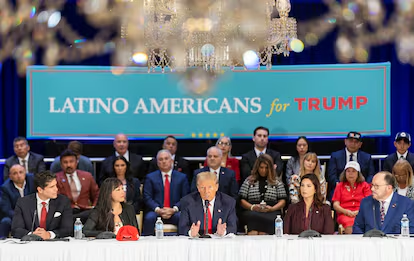Things that Did Not Matter in the Election

While we try to figure out what the hell happened last month, it’s important to eliminate factors. One thing that did not drive urban voters of color to the Republicans was not the Trumpist rhetoric of dangerous “shithole cities.”
If urban voters were rejecting liberal overreach or social disorder in their cities, we might expect that to show up as shifts toward Mr. Trump in Seattle, Minneapolis and Portland, Ore., three places with disruptive pandemic-era protests and progressive policy experiments.
But when we look at all 68 urban core counties — counties encompassing what we would think of as the “inner cities” of the nation’s largest metropolitan areas — the Minneapolis, Portland and Seattle areas notably didn’t shift much at all. They’re also among the least diverse:
Among these urban counties, how much they shifted toward Mr. Trump is correlated with how diverse their population is. At one end, Allegheny County, where Pittsburgh is, has the lowest nonwhite population share and made no shift at all. At the other, the Bronx and Miami have the highest nonwhite share and made large shifts toward Mr. Trump.
It’s possible that dissatisfaction with city conditions is part of what has pushed some Black, Asian and Hispanic voters away from Democrats, or to stay home on Election Day (a number of those voters who sat out this election may not have voted Democratic even if they had gone to the polls). But similar shifts happened outside of cities, especially in places with more Hispanic residents.
“That shifting was happening everywhere — so it’s happening in Lawrence, Mass., as much as it’s happening in the Rio Grande Valley, it’s happening in the Central Valley of California, it’s happening in Grand Rapids and Detroit,” said Carlos Odio, a co-founder of Equis Research, a Democratic-leaning group that focuses on Latino voters. “These places are so different that the only thing they have in common is that the kinds of people who are switching, they identify as Hispanic.”
He and other researchers and pollsters will now spend months trying to understand why ties have broadly loosened between Hispanic voters and the Democratic Party. But the answer is probably not a story that fits in New York but fails along the Rio Grande.
In cities where more granular precinct data is available, the same demographic pattern recurs at the neighborhood scale: Overall, Mr. Trump is most popular in precincts where white residents are the largest group by population, but he made the smallest gains in such places this year. The broadest gains he made were often in Hispanic neighborhoods, whether they’re predominantly Mexican, Puerto Rican or Dominican.
The bigger issue is that Democrats are now the party of white college educated people, as well as older Black people. That is not a winning coalition. But at least we need to know why we aren’t winning other groups and eliminating factors is key here.


